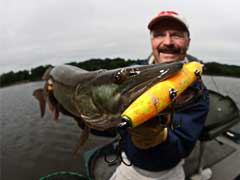Let’s Talk About Asian Carp: Is There a Way to Slow the Invasion?
We have one guest this week – Angie Ju, Founder and President of Two Rivers Fisheries in Kentucky. We are going to talk about her very successful business of catching and selling Asian Carp, along with many other fish. Thereby helping in several areas: removing invasive species from the waters and helping people learn to cook and enjoy eating carp, along with all of the other fish we love to eat.
TWO RIVERS FISHERIES: Established in 2012, Two Rivers Fisheries owns and runs fish processing facilities in Wickliffe, KY and Eddyville, KY. We process and export all varieties of carps including Common, Bighead, Silver, and Grass Carp as well as buffalo, catfish, and other freshwater fish. Our professional fishermen are contracted and harvest the fish out of the Mississippi and Ohio rivers, as well as the Kentucky Lake and Lake Barkley.
BACKGROUND OF THE ASIAN CARP: Carp are a family of fish native to Europe and Asia. The common carp (Cyprinus carpio) has been in the US for over 100 years. The newest carp invaders, bighead carp, black carp, grass carp, and silver carp (collectively known as “invasive carp” or Asian Carp), however, are causing their own brand of trouble in the Mississippi River and rivers and lakes within the Mississippi rivershed. These four species of fish were introduced to the U.S. in the 1970’s to control algae, weed, and parasite growth in aquatic farms, weeds in canal systems, and as one form of sewage treatment.
Invasive Asian Carp cause serious damage to the native fish populations in the lakes and rivers that they infest because they out-compete other fish for food and space. These invasive Carp are also thought to lower water quality, which can kill off sensitive organisms like native freshwater mussels. Invasive carp have been known to dominate entire streams, effectively pushing out the native species.




























 Wally
Wally


 We Love our Sponsors and know you will too! We could not be here without them!
Need some help in the outdoors with gear? Supplies? Know how?
Please check out our sponsors that support all areas of the outdoors and Ultimate Outdoors Radio and ultimateoutdoorsradio.com.
We Love our Sponsors and know you will too! We could not be here without them!
Need some help in the outdoors with gear? Supplies? Know how?
Please check out our sponsors that support all areas of the outdoors and Ultimate Outdoors Radio and ultimateoutdoorsradio.com.